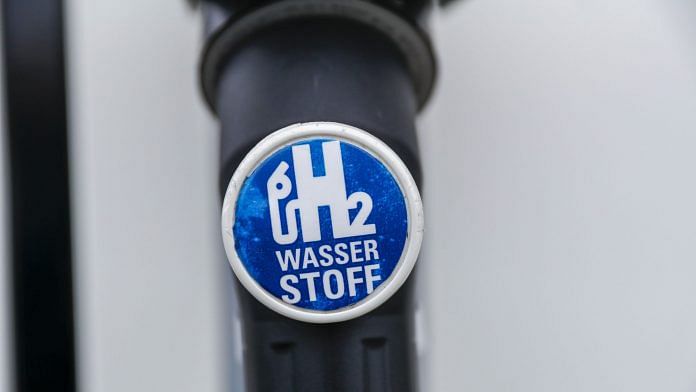Surely hydrogen is the future of energy. Why else would the European Union, as part of its Green Deal, plan to shovel 470 billion euros ($550 billion) into infrastructure to electrolyze and use the stuff? Why else would China, Japan and South Korea be placing their own huge bets on the gas?
The enthusiasm about hydrogen has a simple reason: Whether it’s used in a fuel cell or burned to create heat, the only “exhaust” it emits is innocently clean water. Therefore, wherever hydrogen replaces fossil fuels, it helps slow global warming. That explains the worldwide race to dominate the various niches of a market projected by some banks to be worth trillions of dollars by 2050.
Then again, perhaps this is just the latest of several hydrogen bubbles, destined to pop like all the others. A first one, inflated by a seminal essay from 1970, ballooned the following decade before going pfft in the 1980s. A second expanded and popped along with the tech bubble around 2000. Maybe hydrogen is the future … and always will be.
It certainly has daunting disadvantages. Yes, it’s the most common element in the universe. But it doesn’t appear in its pure form on earth. So it must be separated by running an electric current through water to split the oxygen and hydrogen atoms apart. That takes energy, which better be “green” — that is, captured from the sun, wind or other renewables. Otherwise, what’s the point?
This process makes green hydrogen expensive relative to both fossil fuels like natural gas and hydrogen captured in less clean ways. BloombergNEF, our parent company’s energy institute, reckons that technological improvements will rapidly make it cheaper in the coming years. But even then, it’s still hard to transport and store. Unless combined with other chemicals, it must be compressed to 700 times atmospheric pressure or refrigerated to minus 253 degrees Celsius. Hydrogen also likes to explode.
These drawbacks all but disqualify hydrogen from the application that currently gets the most hype: as a fuel to power cars, vans and trucks. On almost every count, vehicles powered by hydrogen fuel cells lose against their “clean-energy” rivals, electric cars running on batteries.
For a start, the hydrogen cars are only half as efficient. If an electric car converts 86% of the energy originally harnessed by a wind turbine into moving the vehicle forward, the hydrogen car has access to only about 45%. A car with a fuel cell also has more moving parts and is more expensive to maintain than one with a battery. And, unlike the battery car, it can’t be “reloaded” at home.
This is bad news especially for Toyota Motor Corp., Hyundai Motor Co. and Honda Motor Co. Ltd, the carmakers that are placing the biggest bets on hydrogen in transportation. The case for hydrogen trucks is also weak.
Michael Liebreich, BloombergNEF’s founder, reckons hydrogen doesn’t even make sense for trains. It would merely eliminate the need to electrify the track, while locking in a more complex and less efficient solution. It’s only in long-haul aviation or oceanic shipping where hydrogen might beat electric batteries, thanks to its higher energy density. The batteries to get a plane to the other side of the world would be too big and heavy.
Hydrogen doesn’t work much better in heating residential buildings: It’s usually easier to use green electricity to power heat pumps, which can also be “reversed” for cooling. In most industrial uses for heat, hydrogen also loses out to electricity.
The long-term solution to slow global warming is therefore to electrify everything, as long as that electricity comes from renewable sources. Aye, there’s the rub. We simply can’t run everything on electricity. And we won’t ever have sun and wind amply and reliably enough to keep the lights on all the time and everywhere.
So here at last is the killer app for hydrogen. It could be the fuel that picks up the slack whenever the clean power grids of the future can’t keep up. For once, the gas seems unequivocally superior to all other options, including nuclear energy.
We can electrolyze the hydrogen whenever we have excess sun or wind. As Liebreich predicts, we will then store it in massive underground caverns near the central nodes of our power grids, where it can be fired up at short notice during lulls in direct electricity generation. Hydrogen is thus the plug-in technology to make the overall project of electrification and decarbonization possible.
That’s huge. It also means that, while some of today’s investments in hydrogen will flop, others will pay off spectacularly. And part of their return may be saving our planet. – Bloomberg
Also read: These are the markets of tomorrow — hyperloops, edtech, e-vehicles and reskilling



